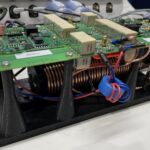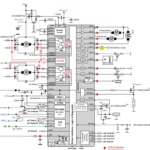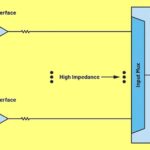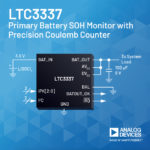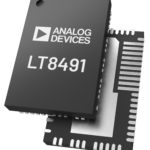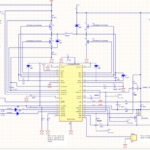Power supplies from phone chargers to EVs to industrial machinery rely on semiconductors, either in discrete packages or integrated into power modules, to deliver power. APEC 2024 was full of power sources and components. The roundup below highlights regulators, switches, and power semiconductors. We also highlight wireless power delivery and chargers. Be sure to see […]
analogdevicesinc
Power windows: now much more than just a motor and switch, Part 2
The automotive power window has evolved from a basic on/off switch and motor to a sophisticated motion-control subsystem with dedicated ICs. As with most improvements, there are both expected and unanticipated ripple effects in product objectives, associated design, and actual production. As cars became increasingly “electrified” with more motors, switches, lighting, power seats, infotainment, advanced […]
Improving battery power efficiency for IoT devices
Nanopower ship mode and sleep mode can be optimized to reduce power consumption. Suryash Rai • Analog Devices Inc. In the connected world of the internet, power management is an important way to boost the efficiency of IoT applications. In most situations, the sensor node (data acquisition element) sits in a remote area and is […]
How input high-Z technology keeps down ADC power and size
Muxed SAR ADCs equipped with high-impedance technology can substantially reduce circuit footprint and energy use without compromising performance and accuracy. Sanjay Rajasekhar, Arvind Shankar • Analog Devices Inc. Muxed successive approximation register analog-to-digital converters (SAR ADCs) find use in applications that must constantly monitor multiple critical variables. In optical communications, laser biasing could be monitored […]
Step-down buck converter reduces space in multi-cell battery apps
Analog Devices, Inc. introduced the MAX77540 step-down buck converter, which provides single-stage power conversion in multi-cell battery applications, such as augmented reality/virtual reality (ARVR) headsets, land mobile radios (LMRs), and digital single-lens reflex (DSLR) cameras. The power-dense MAX77540 buck converter features 94 percent peak efficiency and wafer-level packaging that measures 61 percent smaller than traditional […]
IoT PMIC uses a single inductor to power multiple rails
The new MAX77659 single-inductor multiple-output (SIMO) power management IC (PMIC) with integrated switch-mode buck-boost charger from Analog Devices, Inc. charges wearables, hearables, and Internet of Things (IoT) devices faster and in less space than any other PMIC available today. The MAX77659 SIMO PMIC delivers over four hours of playtime after a short, ten-minute charge, and […]
Nanopower primary cell monitor incorporates precision coulomb counter
Analog Devices, Inc. new LTC3337 is a nanopower primary (non-rechargeable) cell State-of-Health (SoH) monitor with precision coulomb counter, designed to be placed in series with a primary battery with minimal associated series voltage drop. The patented infinite dynamic range coulomb counter tallies all accumulated battery discharge and stores it in an internal register accessible via […]
80 V buck-boost battery charging controller integrates MPPT and I2C
Analog Devices, Inc. introduced the LT8491 buck-boost battery charging controller that features Maximum Power Point Tracking (MPPT), temperature compensation, and an I2C interface for telemetry and control. The device operates from input voltages above, below, or equal to the regulated battery float voltage. The LT8491 offers three selectable Constant Current Constant Voltage (CC-CV) charging profiles, […]
Dual-drive output driver IC efficiently toggles between two slew rates for low EMI motor drives
Analog Devices, Inc. announced a simple power solution that maximizes efficiency and minimizes electromagnetic (EM) emissions of motion systems as customers migrate to higher density automation. The ADuM4122, an isolated, dual-drive strength output driver that uses iCoupler technology, empowers designers to harness the benefits of higher efficiency power switch technologies. Electric motor-driven systems account for […]
Power Electronics Top Talks in August 2019 on EDABoard.com
Peer-to-peer, engineer-to-engineer questions and answers from the EDABoard.com engineering community around power electronics. Click the “Read more” link and follow the entire conversation and maybe add your two cents by logging in to EDAboard.com 1 minute vs. 1-second isolation voltage test – Some offline transformers are spec’d for 3750vac for 1second (3mA). Some are spec’d […]

